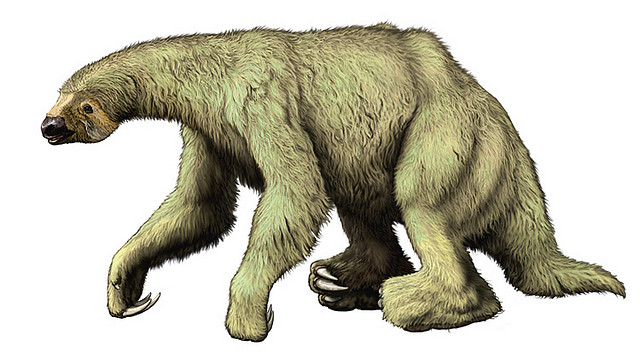 The Mystery of the Sloth
The Mystery of the Sloth
It is not unusual to find ancient things in caves. These cool, dark, unexposed worlds are excellent at preserving the past, and in a diversity of ways. Caves in Lascaux, France, famously preserve the brilliant animal paintings of our Cro-Magnon predecessors. Carlsbad CavernsNational Park is home to well over 100 caves – that are known – and some hold the remains of past life, such as the formidable dire wolf.
What seems a little unusual, however, is finding the remains of a massive ice-age herbivore 400 feet down inside the Carlsbad Caverns. The Shasta ground sloth, although the smallest of all ground sloth species, reached 9-feet long and weighed a quarter of a ton. They wielded vicious sickle-shaped claws and a heavy, powerful tail.
These weapons, though, were likely used in defense.These meaty ice-age herbivores were ideal prey for the fleet-footed cats and wolves of the period. Unlike the sharpened teeth of their predators, sloths had flat teeth, which they used to munch the plentiful vegetation that blanketed this once cool, damp land.
400 feet beneath the ground, however, there are no plants to eat. So what business does a sloth have in such an austere, lightless world? Probably none.
Geologist Carol Hill, who helped to excavate the fossils, believes that the sloth entered the caverns alive, likely by falling in. "There hasn't been a stream running through the Caverns for well-over half a million years. So it is unlikely that the sloth's body, which we dated to around110,000 years ago, was washed in."
The bones are generally clean, and one would expect them to be covered in sediment if they were deposited by a stream or flood. Additionally, wrote Hill and Gillette in their analysis, "None of the bones appear to have been tumbled, rounded, or abraded by stream-current activity,nor is there any indication of scattering or damage by carnivores."
The fall from the cave entrance is precipitous –early explorer Jim White used a rope to lower himself down the nearly vertical drop. So once down there, the sloth, who was not built for climbing steep walls, could not escape.
"The sloth was probably injured, frightened, and lost," says Hill. Ultimately, it lay down to die in a pit beneath Devil's Den, a place one travels through when descending into the caverns.
Looking into Devil's Den today, we are pushed to wonder, did the sloth simply slip, or was there another contributor to the fall?
We know from other ice-age sites, notably the Los Angeles La Brea Tar Pits, that wherever these ponderously moving herbivores roamed, cunning predators, fitted with long sabers and menacing claws, lurked nearby.
It is plausible, then, that the Carlsbad Caverns' sloth did not fall in.
Perhaps it was chased.
